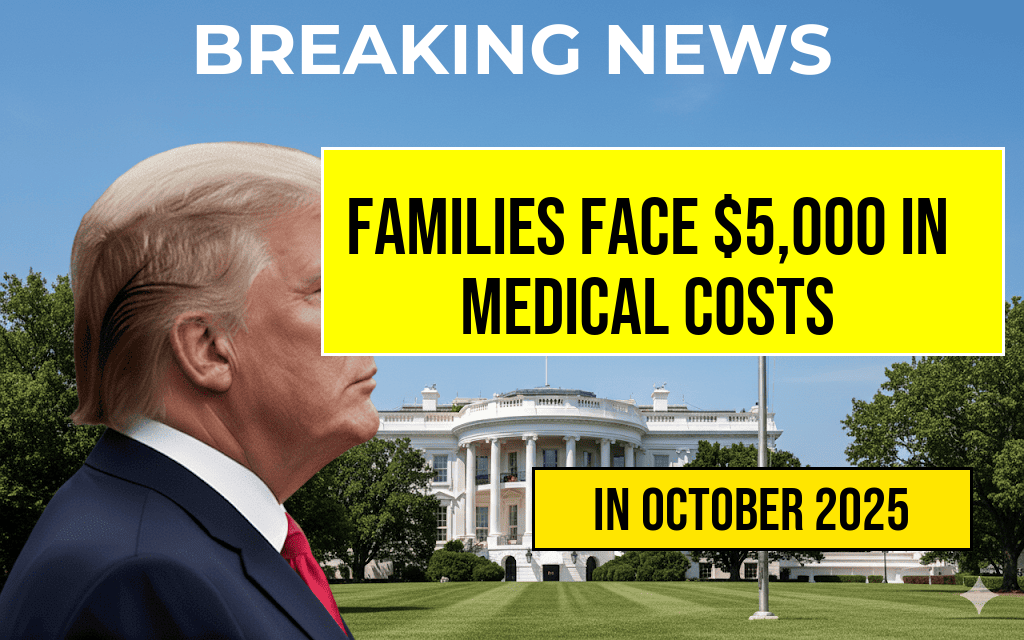As Medicaid undergoes significant changes, many American families are bracing for an increase in out-of-pocket medical expenses. The adjustments, which include stricter eligibility requirements and altered coverage options, could lead to families facing over $5,000 in unexpected costs. This shift comes at a time when healthcare expenses are already a pressing concern for millions, and the potential financial burden is raising alarms among healthcare advocates and policymakers alike.
The Shift in Medicaid Policy
Recent amendments to Medicaid policies are reshaping the landscape of healthcare for low-income families. With the expiration of certain pandemic-era protections, many beneficiaries are at risk of losing coverage or being required to pay more for services. According to the Kaiser Family Foundation, states are now resuming eligibility reviews and redeterminations, which could disqualify thousands from receiving critical health benefits.
Financial Implications for Families
The financial impact of these changes is substantial. Families who lose Medicaid coverage may find themselves without affordable healthcare options, forcing them to turn to private insurance plans that often come with higher premiums and deductibles. A recent report indicates that the average family could incur costs exceeding $5,000 annually if they are unable to secure affordable alternatives. This burden is especially pronounced among those with chronic conditions that require ongoing medical attention.
What Families Need to Know
- Eligibility Changes: Many states are enforcing stricter eligibility criteria, meaning families that previously qualified may no longer be eligible for Medicaid.
- Increased Costs: Families may be faced with new premiums, co-pays, and deductibles that can significantly affect their budgets.
- Healthcare Access: Loss of Medicaid may limit access to essential services, especially for children and individuals with disabilities.
State Responses and Resources
States are responding in varied ways to the changes in Medicaid. Some are implementing outreach programs to educate families about their options and the importance of re-enrollment. Others are enhancing their marketplaces to ensure that individuals who lose Medicaid can transition to affordable plans seamlessly. The HealthCare.gov website serves as a resource where families can compare plans and understand their eligibility for subsidies.
Community Support Initiatives
Nonprofit organizations and community health centers are stepping up to offer support to families navigating these changes. Many are providing free counseling services to help families understand their healthcare options and potential financial assistance programs. This support is crucial in helping families avoid gaps in coverage and manage healthcare costs effectively.
Long-Term Outlook
The long-term implications of these Medicaid changes remain uncertain. Health economists indicate that if the trend of rising out-of-pocket costs continues, it could lead to increased rates of medical debt and financial strain among families. Policymakers are urged to consider reforms that would stabilize healthcare costs and maintain access to essential services for vulnerable populations.
Key Statistics
| Year | Average Out-of-Pocket Costs | Families Affected |
|---|---|---|
| 2022 | $3,500 | 10 million |
| 2023 | $5,000 | 15 million |
As families navigate these turbulent changes, awareness and proactive measures will be key in mitigating the financial impact of rising medical bills. Ensuring that families have access to necessary healthcare resources will be vital in safeguarding their health and financial stability in the months ahead.
Frequently Asked Questions
What are the recent changes to Medicaid that are affecting families?
The recent changes to Medicaid include adjustments in eligibility requirements and coverage options, which may lead to families facing higher out-of-pocket expenses.
How much are families expected to pay out-of-pocket due to these changes?
Families may face over $5,000 in out-of-pocket costs as a result of the adjustments made to the Medicaid program.
Who is most affected by the rising medical bills related to Medicaid changes?
Low-to-middle income families, especially those who previously relied on Medicaid for comprehensive coverage, are among the most affected by rising medical bills.
What can families do to manage their increasing medical costs?
Families can explore options such as applying for financial assistance, seeking out community health resources, or reviewing their insurance plans for potential savings.
Are there any support programs available for families struggling with medical expenses?
Yes, various support programs exist, including state-funded initiatives and non-profit organizations that provide financial assistance and healthcare resources to families in need.






